Think back to your last big purchase.
It probably wasn’t the product’s spec list that made you commit. It was more likely how the seller and their message made you feel.
That’s the aim of emotional marketing: to instill positive feelings that lead people to engage with brands and buy confidently.
In this guide, you’ll learn how emotional marketing works for SMBs and how to implement it. You’ll also see emotional marketing strategies in action and find practical ways of using Pipedrive to bolster your efforts.
Key takeaways
Emotional marketing uses human emotions to influence purchasing decisions.
Campaigns built on emotional triggers and storytelling are more memorable than purely rational campaigns.
Consistency across every channel makes your emotional message resonate.
Pipedrive helps you capture emotional triggers, segment audiences and personalize follow-ups. Try it for free for 14 days to see how it turns emotional marketing into measurable engagement and growth.
What is emotional marketing?
Emotional marketing is when brands design messaging and customer experiences to trigger human emotions.
The aim is to influence buyers’ purchasing decisions, build stronger connections and boost sales.
Where feature-based marketing says what a product does, emotional marketing leads with why it matters. Here are a few simple examples showing how the two tactics compare:
Feature-based marketing content | Emotional marketing content |
“Our market research software processes data 50% faster”. | “Reclaim time at home by processing market research data faster”. |
“This credit card has 0% foreign transaction fees”. | “Travel with peace of mind, knowing your money goes further abroad”. |
“Our CRM tracks every customer interaction”. | “Strengthen connections and customer loyalty by remembering every detail that matters”. |
The product feature content is accurate, but won’t spark any emotional responses. Whereas the emotional content makes potential customers feel something positive:
The excitement of having more family time at home
The relaxation of carefree travel
The confidence that sales relationships will grow stronger
These positive emotions add to the products’ appeal, making deals easier to close.
Other ways to build emotional connections include sending hand-written thank-you notes after sales and using local or cultural references people can relate to in creative marketing content.
Why emotional marketing works: key psychological principles
People don’t buy on logic alone.
Research in neuromarketing shows that 95% of purchase decisions are subconscious. Emotions guide the customer’s behavior before rational thought even kicks in.
Emotional marketing statistics aside, the tactic works because it’s simple. It taps into the brain’s instinctive decision-making system and doesn’t depend on conscious reasoning.
Here are the main psychological sales principles that explain emotional marketing’s power:
Psychological principle | Why it matters |
Emotional triggers | Feelings like joy, trust, pride and nostalgia guide decision-making more than facts. For example, Honda has studied drivers’ physiological responses to understand what excites people about different car features. |
Emotional recall | People remember feelings long after facts fade. Triggering those feelings keeps your brand and product in buyers’ minds. Apple’s Think Different campaign resonates decades later as it tied the brand to creativity and empowerment, not just computers. |
Storytelling and memory | Narratives activate many parts of the brain to make brand and product experiences more memorable. This is why SaaS companies market products using case studies. They turn other customers’ positive experiences into impactful stories. |
Social proof (i.e., mirror neurons) | Emotional responses spread when people see others react to or enjoy experiences. Trust and credibility are infectious. For instance, user-generated content (UGC) on social media sparks emotional engagement, fueling word of mouth. |
Emotional bond | When customers know which brands make them feel good, they’ll return. They no longer need to risk bad experiences. Pipedrive helps sales reps feel more in control of their work, and that positive association means they keep using the product. |
Emotional marketing campaigns outperform purely rational ones because all these psychographic principles work together.
They’re a powerful tool for businesses because emotional appeal builds stronger brand loyalty. Marigold marketing strategist Simon Jeffs explained this in a DMA article:
Emotional marketing also strengthens pricing power, which is your ability to charge more than a competitor for the same product without losing customers.
Google and Ipsos found that emotional YouTube ads were 40% more likely to make people say a brand is worth paying more for. It’s one more way that emotional marketing grows profitability.
Want to Learn How to Influence Your Prospect’s Buying Decisions?
How to build an emotional marketing strategy as an SMB
Building emotion into your marketing strategy for the first time is daunting, especially if you’re used to selling based on specs and prices.
Here’s a simple framework to guide you through the process, from getting to know your audience better to measuring and enjoying campaign results.
1. Understand your audience’s emotional triggers
Start by learning what really matters to your target audience.
Talk to customers directly. Read their reviews. Watch their social media comments. These unfiltered conversations help reveal the emotions behind purchasing decisions.
Let’s say you run a software company and see customers using phrases like “it saved me from the stress of…” or “it gives me more time to…”.
Those words point to emotional triggers. People buy or renew because they’re relieved about their work being easier, or grateful to have time for other tasks.
For example, in this Slack review, the user comments on how the tool “saves me from chasing updates”.
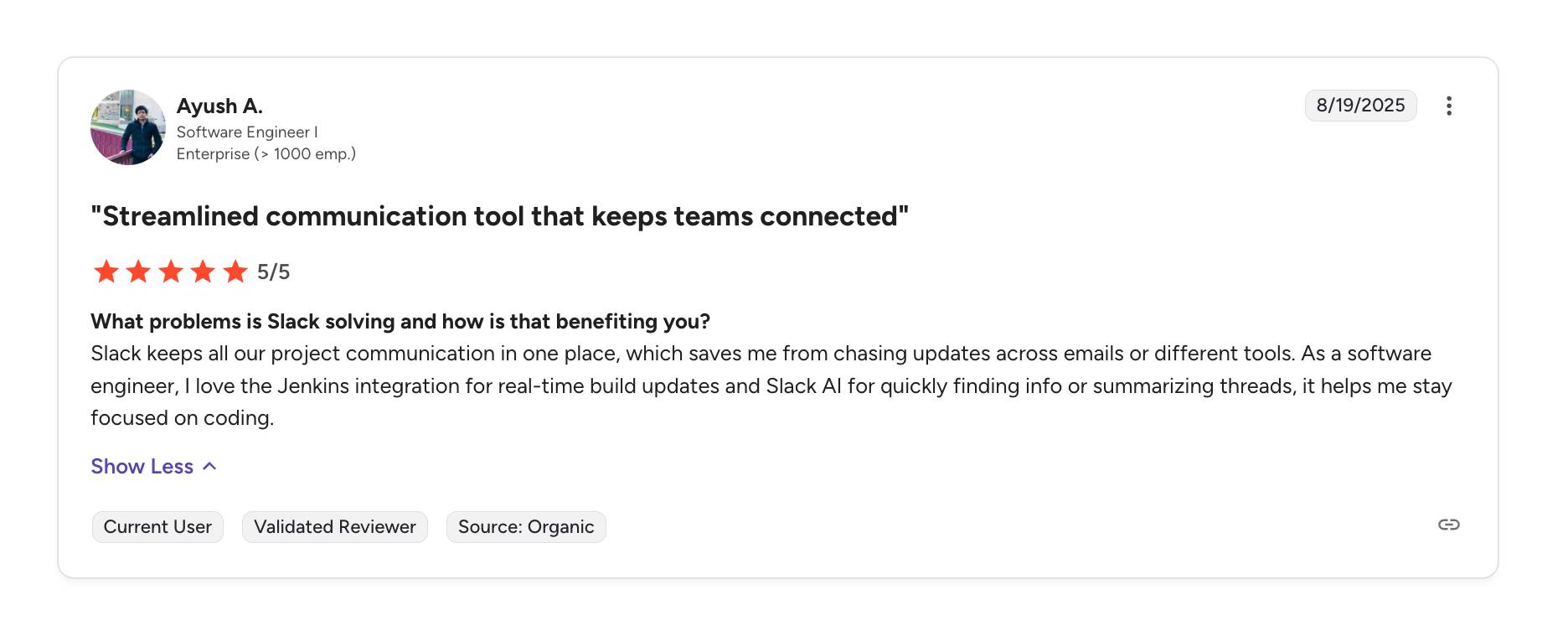
They follow by saying “I love the Jenkins integration…”, again signaling an emotional connection to the product and how it helps them.
Once you understand these kinds of emotions, you can create messaging that reflects them.
Not sure what to look out for? Other classic buying emotions include:
Confidence – feeling capable or supported
Security – feeling safe or protected
Pride – feeling accomplished or recognized
Belonging – feeling part of a group
Excitement – looking forward to new experiences
Control – having more power over a situation
Joy – finding happiness in a product or outcome
Curiosity – being interested in trying or learning something
Build your own list as you research, then you can narrow your focus as you learn which emotions are most common.
2. Pick 1–2 core emotions to focus on
Choose the one or two emotions that show up most often or connect directly to why people choose your brand over others.
If the majority of your customer comments tie back to relief (“less stress, easier workflow”) and control (“more time, more choice”), let those emotions shape your brand voice.
If people talk mainly about belonging (“the community”), tie emotional marketing efforts to that feeling. Then, you’re ready to invite more people to come and experience it.
Take Headspace. The company uses language (e.g., “stress less”) and imagery (e.g., smiling faces, real and illustrated) on its website to convey feelings of calm and relief – two of its wellness app’s key selling points.
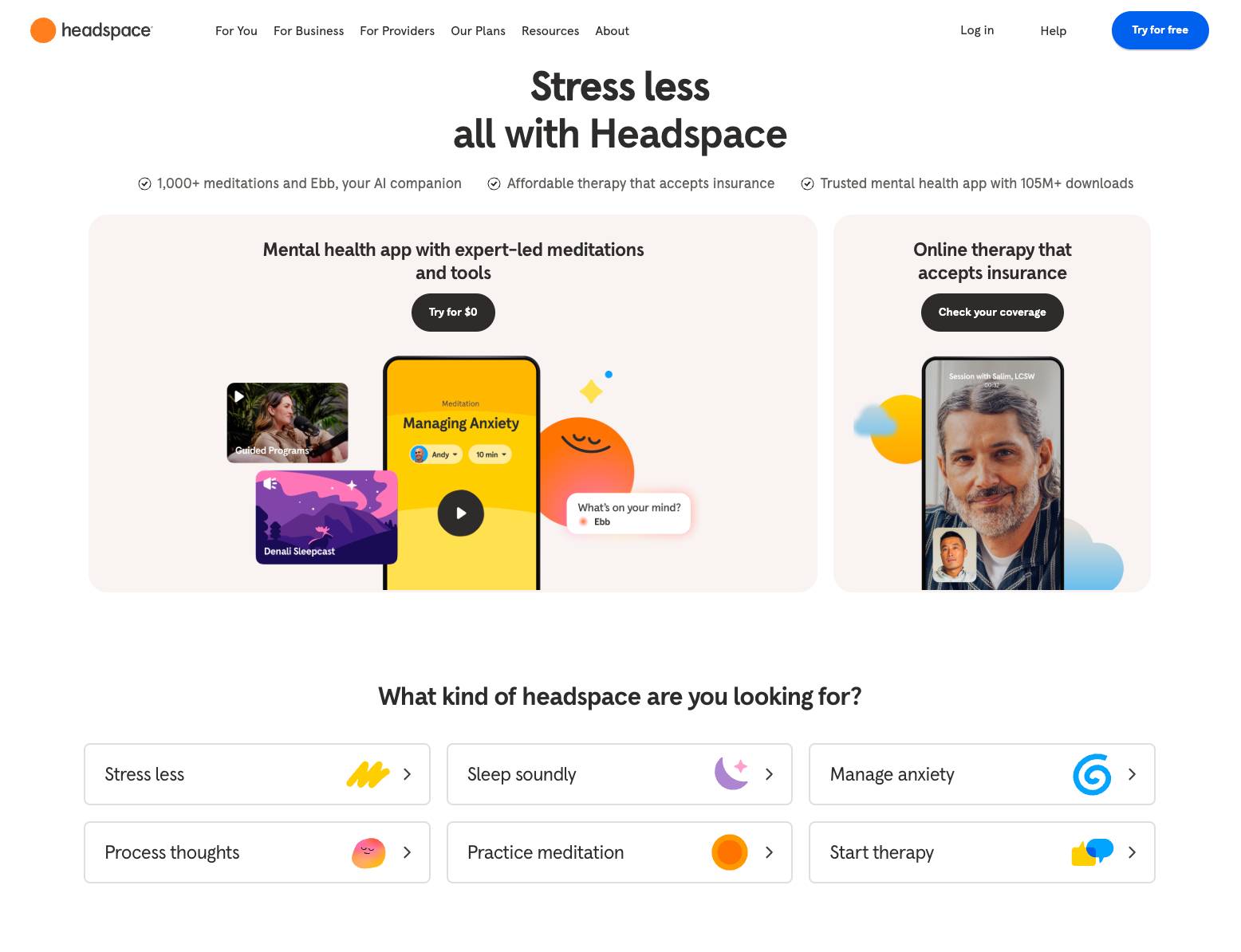
When you choose a focus like this, your messaging feels clearer and more consistent.
Instead of lots of scattered claims, you repeat the same emotional notes your audience already cares about, reaffirming your appeal.
3. Use content to build stories around those emotions
Make those core customer emotions the backbone of your marketing content.
Weave them into your homepage, product copy and social media posts. Borrow customers’ exact language in emotional ads. Highlight emotional outcomes in sales demos and explainers.
Before long, you’ll have a more powerful brand image that people want to align themselves with.
European healthcare brand Philips is great at emotional branding. It ties lots of specific emotions to everyday items across B2B and B2C ranges:
Grooming tools that help you “stay sharp” (pride)
Toothbrushes that “have your whole mouth covered” (security)
Baby products that are “with your baby every step of the way” (confidence)
Alarm clocks that help you “take charge of your sleep” (control)
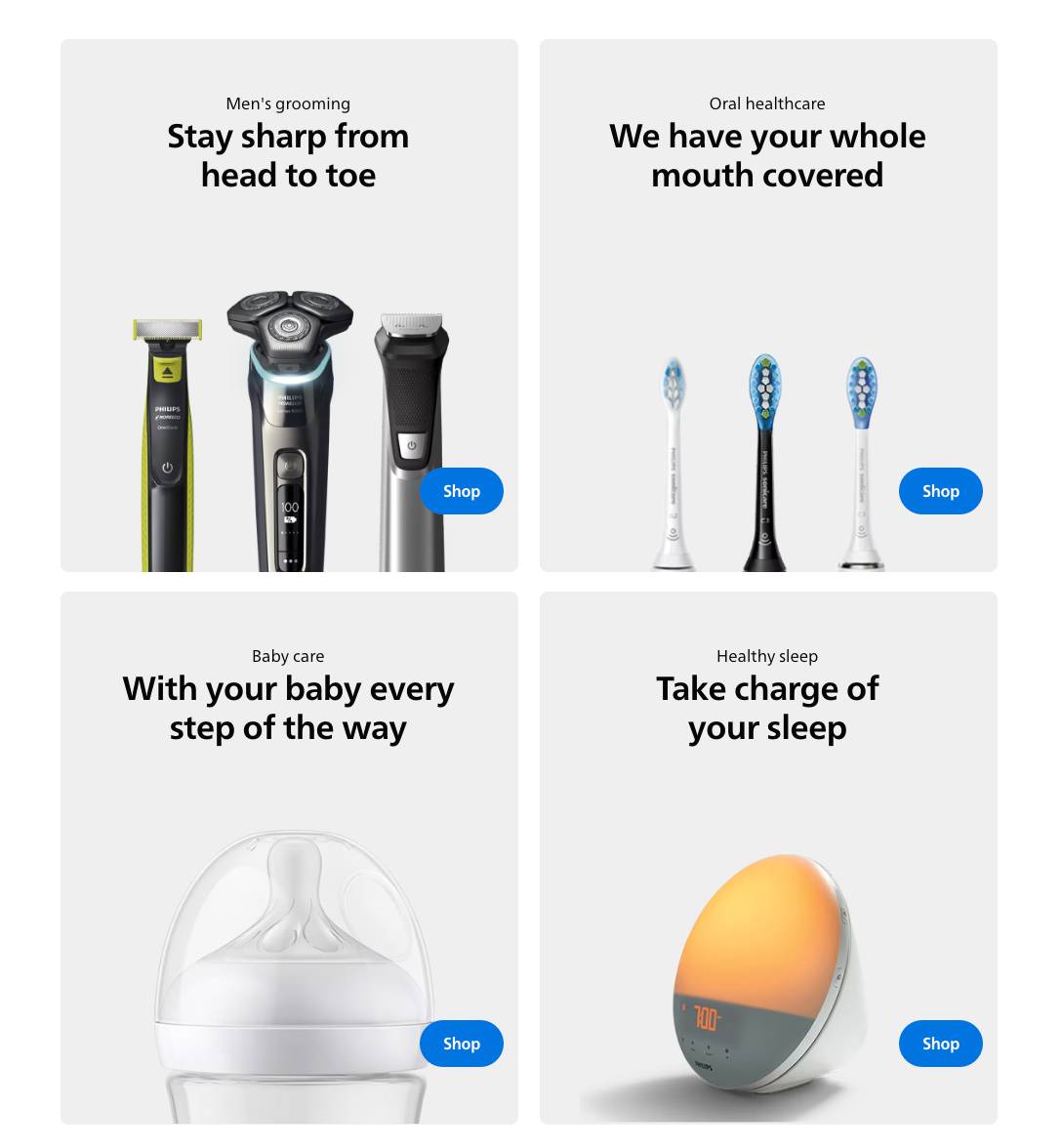
Effective emotional marketing contributes to Philips’ thoughtful, caring brand identity, which is central to its ability to attract and retain customers.
Start small by reframing one product feature as a feeling. If it saves time, call out the relief. If it builds trust, highlight the confidence. If it reduces risk, stress the security.
Once you’re in the emotional messaging mindset, applying the approach across the whole customer journey gets easier.
That consistency is key to delighting your audience.
4. Deliver consistency across touchpoints
Ensure your chosen emotions show up everywhere people interact with your brand.
Consistency strengthens recall, so consistent customer experiences keep you in buyers’ minds.
That means using the same tone, imagery and emotional cues at every step of the customer journey, online and in person.
For example, if your web copy is playful, let salespeople use similar language in follow-up calls. A serious tone with lots of jargon would send mixed signals, diluting the emotional connection.
Other touchpoints to weave into your emotional branding strategy include:
Digital marketing and online interactions | In-person customer engagements |
|
|
Start by mapping out every customer touchpoint. Review each one to see if the tone, visuals and emotional cues add up.
Are your brand awareness efforts addressing the same pain points as your blog content?
Does your emotional advertising reflect common support queries?
Once you spot gaps, close them with clear guidelines and training. Share examples of the tone, words and visuals that fit your brand so every team member knows how to apply them.
5. Measure engagement, not just clicks
Track marketing performance metrics (quantitative) and signals reflecting how people feel (qualitative) to see whether your message connects or falls flat.
After all, emotional marketing’s aim is always to spark a response.
Digitally, check website, email and social analytics tools for engagement metrics like:
Click-through rates from emails and social content
Social media shares
Time on page for your website
In-person customer engagement is more nuanced but still measurable. Look for signs like longer sales conversations and more sales referrals.
Your sales CRM is the best place to get in-person engagement data.
Use Pipedrive to track deal progress, identifying where buyers are most likely to lose interest. Notes allow you to log in-depth behavioral insights on contacts and deals.
The feature looks like this:
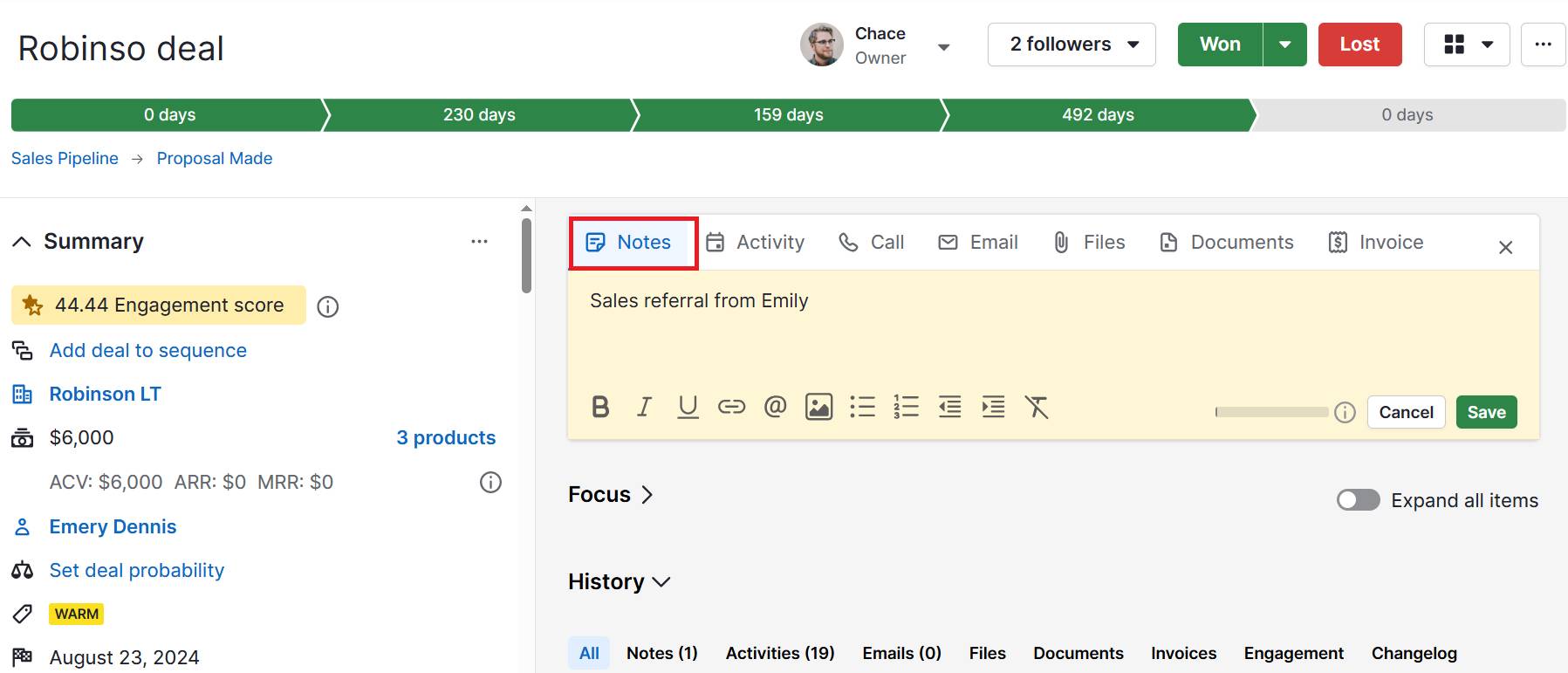
Ask leads and customers directly, too. Run quick customer surveys to see how people felt during their most recent interaction. Check whether the tone matched what they expected.
Pipedrive’s feedback integrations let you pull survey results straight into your CRM system for easy access across the company.
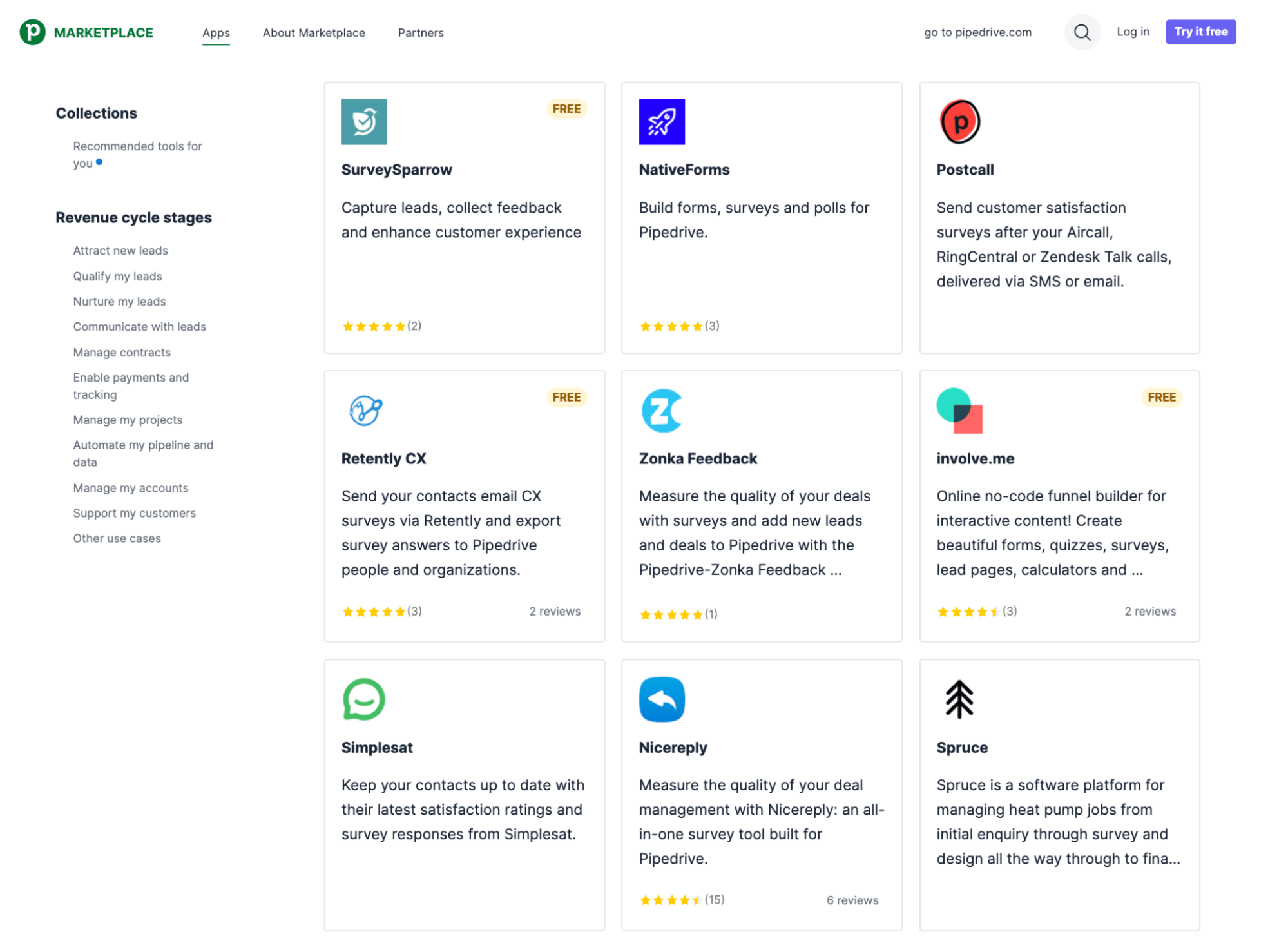
Remember: the goal is to spot patterns, not just gather data.
For example, if your playful social content gets lots of shares but leads go cold at their first sales demo, it’s a sign to bring the same energy into your live presentations. Those thoughtful tweaks are how you’ll shorten the sales cycle.
Download Your Guide to Sales Performance Measurement
Emotional marketing examples from B2B companies
Being “creative, bold, imaginative and memorable”. That’s how former LinkedIn executive creative director Kevin Frank suggested B2B brands build strong emotional connections with audiences.
Some companies already thrive from thinking this way. Here are five great examples.
1. Canva: design made easy through empowerment
Canva’s case studies show how businesses of all sizes use its accessible design tools to create standout sales pitches, product launches and rebrands.
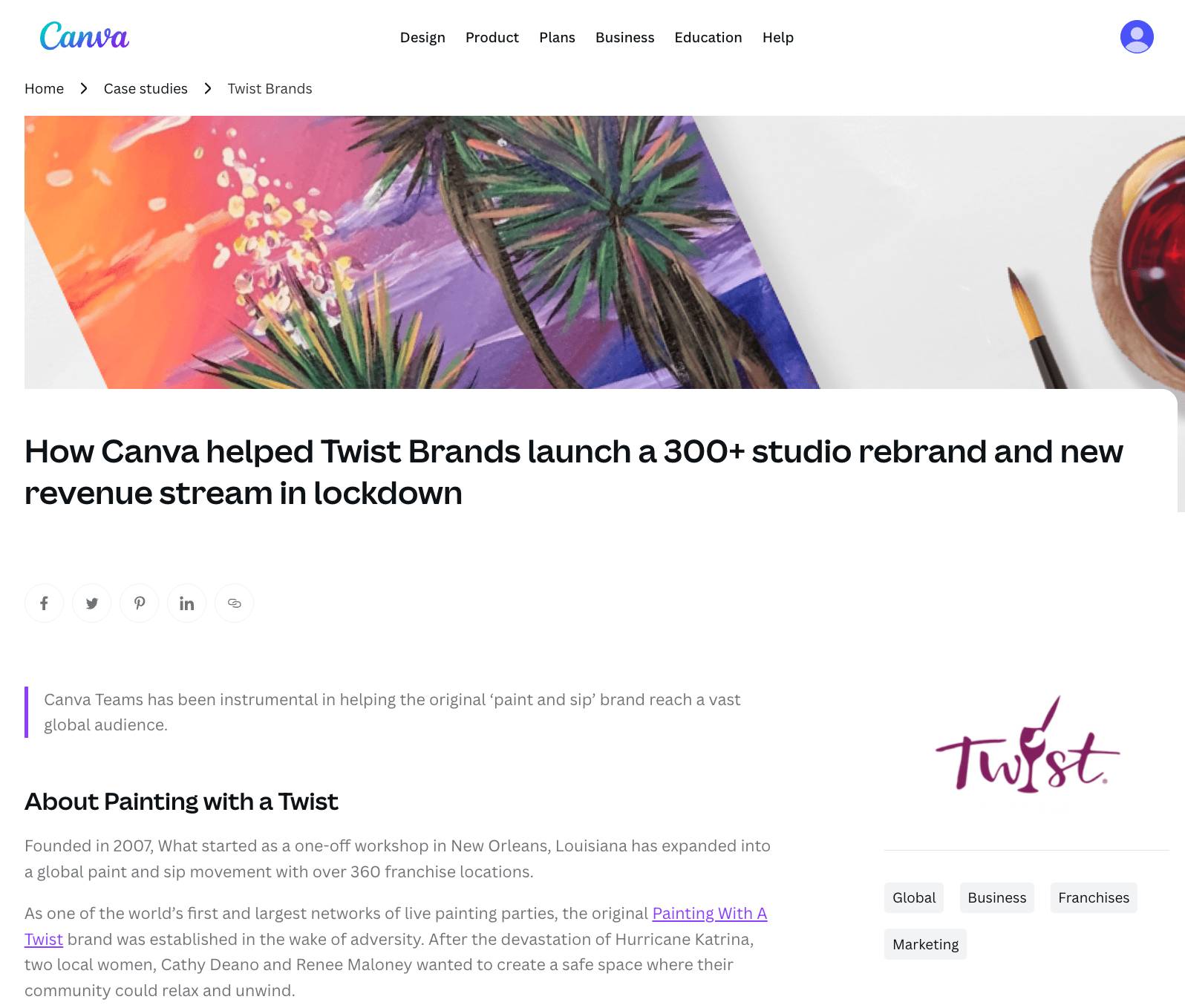
Through these success stories, Canva shows customers what’s possible. It sparks pride and self-belief – emotions to drive confident purchase decisions.
The message here is that design tools don’t just make work easier (features). They help people feel capable and creative (emotions).
SMB takeaway: Promote customer wins ahead of product features to build confidence and emotional connection.
2. Xerox: blending past, present and future themes
Xerox revamped its well-known 1977 Super Bowl ad, adding humor, nostalgia and a fresh “wow” factor to engage both longtime fans and new audiences.
The ad nods to Xerox’s legacy but also highlights its continued focus on innovation. What’s more, the content’s warm, playful tone makes the technology feel human and relatable.
SMB takeaway: Use nostalgia and storytelling tactics to make technical products feel approachable and memorable.
3. SurveyMonkey: empathy through customer voice
SurveyMonkey’s empathic ads tell relatable stories of turnaround and second chances.
Its campaign centers on being heard and equipping people to create change. The tone is hopeful, human and uplifting. It makes research software feel less about data and more about outcomes.
SMB takeaway: Empathy – showing you understand struggles – is a powerful emotional trigger for brand loyalty.
4. WeWork: belonging and community at work
WeWork’s story-driven campaigns about entrepreneurs finding inspiration and support in shared spaces make its service feel relatable.
The videos highlight real founders, portraying co-working as a source of belonging and empowerment rather than just a professional service.

SMB takeaway: Promote community and shared values where natural. Emotional marketing works best when customers feel part of something bigger.
5. Fiverr: humor and relatability for freelancers
Fiverr’s TV and video content dramatizes dream projects coming to life through freelance support.
The campaigns evoke excitement and energy to position Fiverr as the tool that makes bold ideas possible.
SMB takeaway: Tie your service to ambition. Show how you help customers unlock confidence to achieve their goals.
How to use Pipedrive as part of your emotional marketing strategy
Emotional marketing requires real customer insights.
You need to know how people feel. What excites and persuades them. What they expect from interactions. How they view your brand.
Enter Pipedrive. Easy to use out of the box without cutting corners on data quality or depth, it’s a powerful tool for understanding and organizing people on an emotional level.
Pipedrive in action: Digital agency Spark Interact uses Pipedrive to provide personalized, timely follow-ups. Its AI sales notifications continuously learn from reps’ interactions, so the team can better time their outreach and tailor messages to clients’ needs at key moments. In seven years of using Pipedrive, Spark Interact achieved an average annual revenue growth of 12%.
Here are four practical ways Pipedrive can support your emotional marketing efforts:
Track emotional triggers in sales conversations. Use notes and custom fields to log the phrases customers use in emails and calls. Find emotional patterns across deals and contacts, and let them guide your marketing strategy.
Segment your audience by emotion, not just demographics. Use data to segment customers based on emotional cues. Then tailor messaging to each group. For example, a “risk-averse” segment might need more reassurance to convert.
Automate emotional follow-ups. Use workflow automation to send responses that fit customers’ feelings across the buyer journey. Intrigue a curious lead with more product info, or tap into a new customer’s excitement with a personalized thank-you message.
Measure engagement beyond clicks. Track email replies, forwards and longer-term interactions to check your emotional message resonates. These signals show where genuine emotional connections form and where efforts go to waste.
Here’s how that looks – a clean contacts dashboard where you can capture emotional triggers, segment audiences and track interactions in one place:
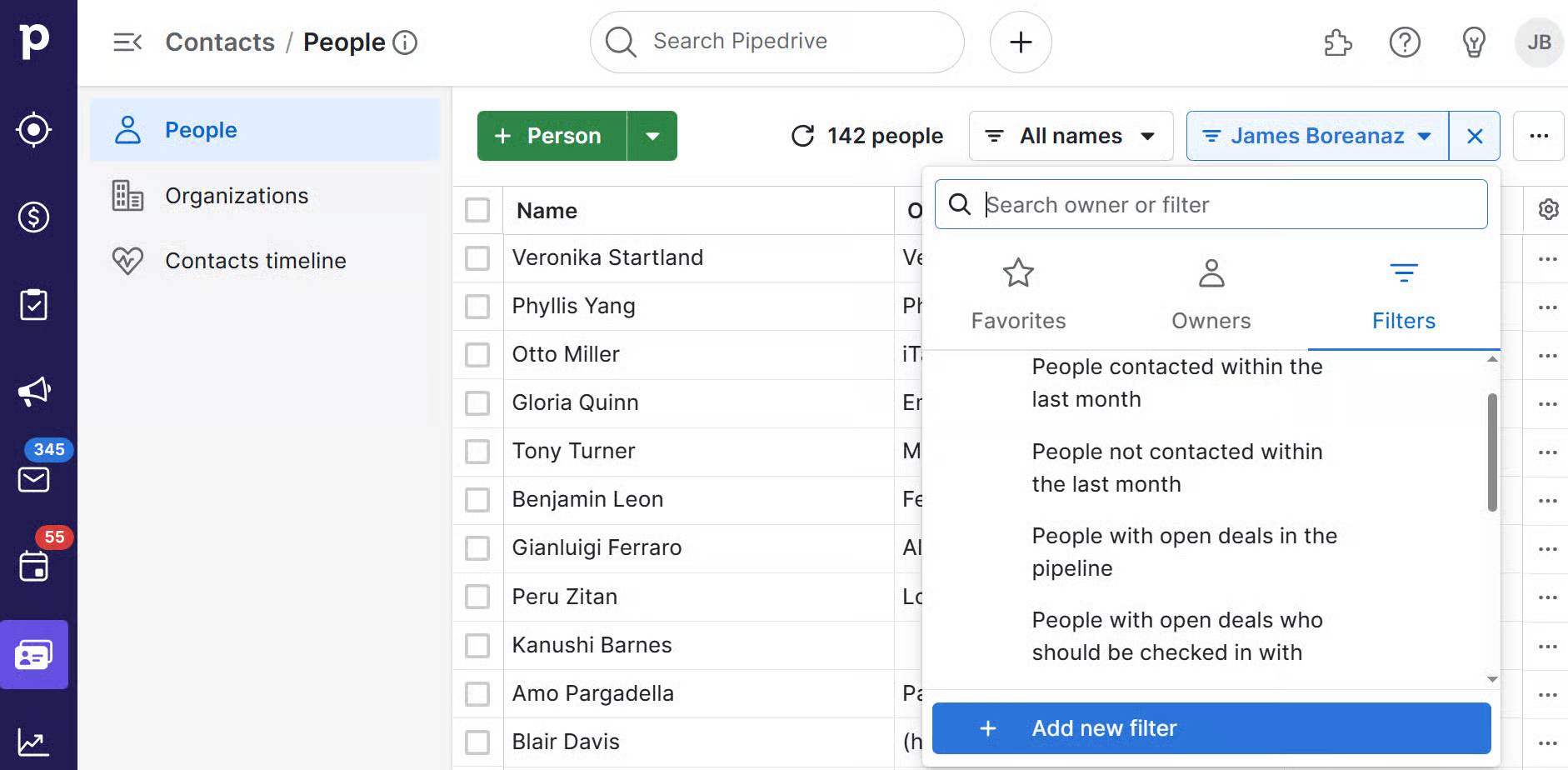
These features and many others help Pipedrive users turn customer data into insights they can act on.
The CRM is a reliable tool for making emotional marketing practical, not just theoretical.
Final thoughts
Emotional marketing works because it reflects how people really make decisions.
Features and facts help, but feelings like joy, trust, pride and belonging really drive action and loyalty.
The opportunity for SMBs is simple: build campaigns that connect emotionally, stay consistent across all channels and measure responses that go deeper than clicks.
Pipedrive makes capturing those insights effortless, so you can act on them sooner and get ahead of feature-focused competitors. Sign up for a free 14-day trial to see it in action.






